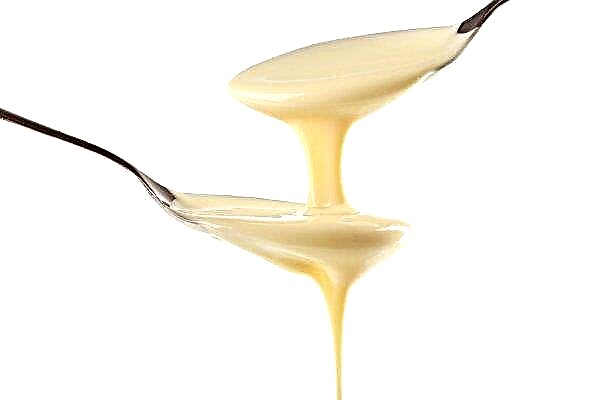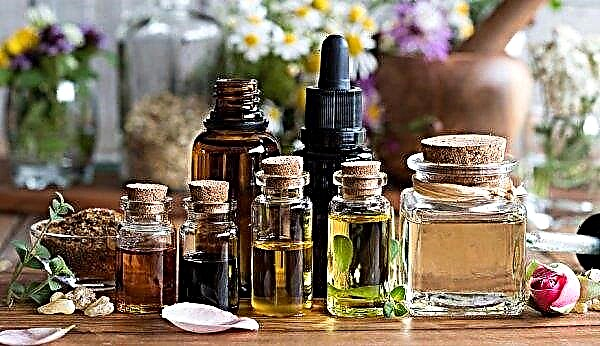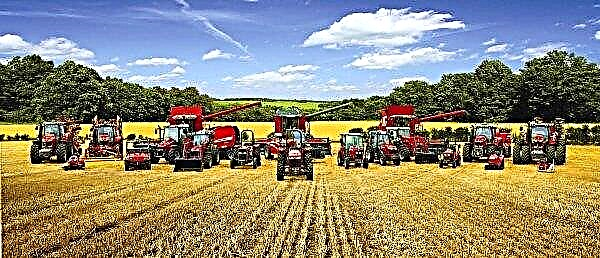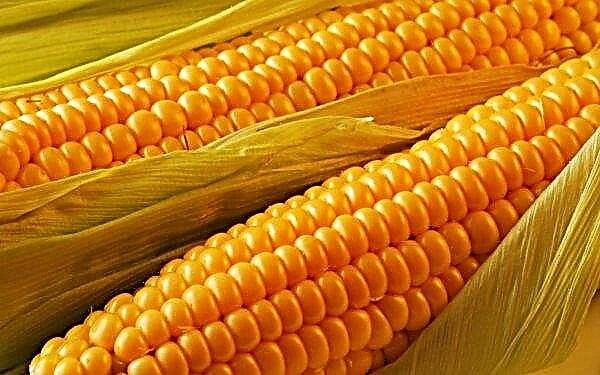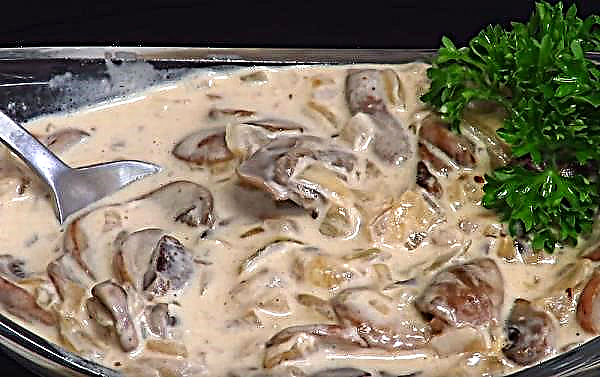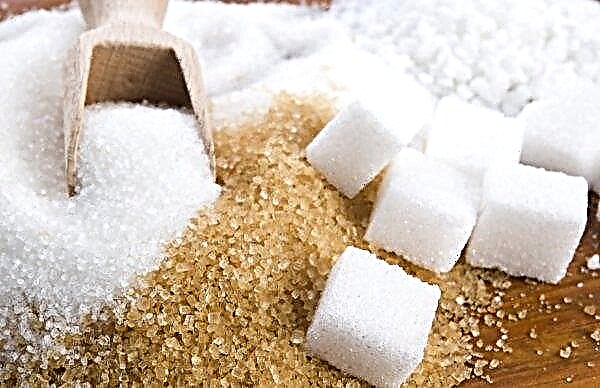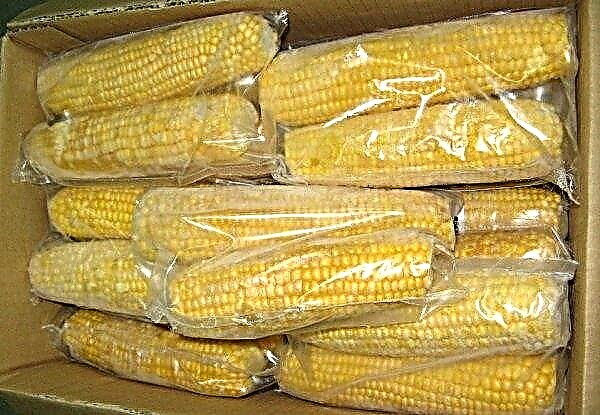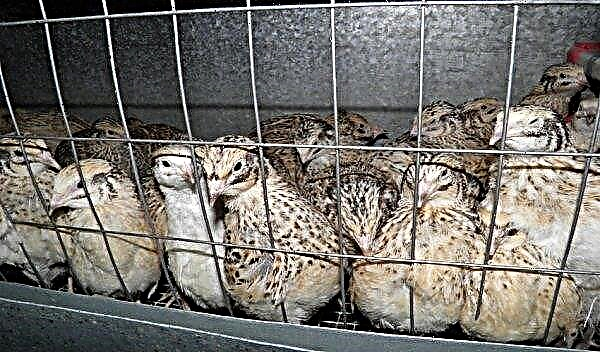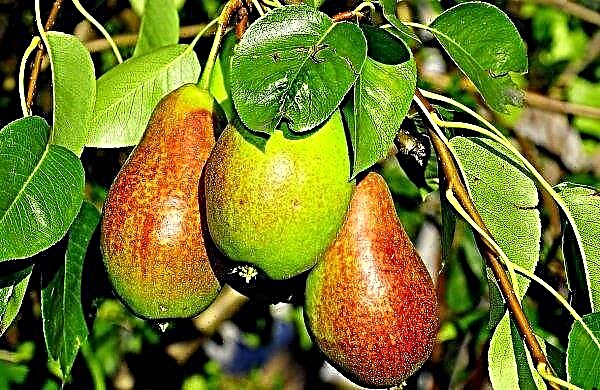Growing pine trees in summer cottages is not surprising, but placing conifers in flower pots installed in an ordinary apartment is a much more unusual phenomenon. To get a beautiful decorative element for your home, you need to choose dwarf varieties of pines. What exactly is worth paying attention to when indoor cultivation of such plants and how to provide them with proper care for the most productive growth and development - read in this article.
Suitable varieties of pines
Not all types of pines are suitable for indoor cultivation, so before buying a seedling or seeds, you should familiarize yourself with the varieties most suitable for pots. The choice of dwarf varieties from the point of view of dendrology is based on the height of an adult tree: if after 30-50 years of cultivation it did not exceed human growth, then its planting material can be used for further home cultivation.
Did you know? Amber is a petrified fossil resin of conifers, including pine. They grew approximately 50-100 million years ago.
The most popular plants of this plan include the following:
- Mountain pine with spherical crown, represented by decorative varieties Mops (at the age of ten reaches 0.5 m in height), Gnom (with a maximum height of up to 1 m) and Ophir - up to 0.5 m in height.

- Bosnian white-winged Schmidt pine, with a dense and dense spherical crown (grows up to 0.5 m).

- Weymouth (white eastern), usually represented by varieties Blue sheg (has bluish-green needles, grows up to 1.2 m) and Makopin (the main feature is unusual cones in color, acquiring a brown color during ripening).

- Spinous variety with raised branches, which is characterized by slow growth, due to which it is often planted to form a bonsai.

How to plant
Planting pine in pots begins with the selection of a suitable planting capacity, preparing a nutrient substrate and the planting material itself (mainly young seedlings). The landing process itself is also not without certain features that you should definitely consider before performing all actions.
Did you know? The highest variety of pines in the world is deservedly considered the Lambert pine, whose adult trees often reach 70–80 m in height. Such "giants" are growing in the United States and Canada.
Pot selection and soil preparation
Despite the fact that we are talking about dwarf varieties of pine, the pot for them should be quite spacious, with a diameter of about 40 cm and about the same depth. This place will be enough for middle-aged plants, and for replanting seedlings brought from the store, you can use smaller plastic or clay containers: about 20 cm in diameter.
 If there are no drainage holes in the selected product, then it is easy to pierce them in the plastic bottom using a thick awl. Of course, as the tree grows, it will have to be replanted, each time choosing a container 5-7 cm larger than the previous one.
If there are no drainage holes in the selected product, then it is easy to pierce them in the plastic bottom using a thick awl. Of course, as the tree grows, it will have to be replanted, each time choosing a container 5-7 cm larger than the previous one.
As for the ideal composition of the soil mixture, it will be loose, drained and sandy soil with a neutral level of acidity. If it is not possible to collect land in the forest or purchase it in a specialized store, you can prepare everything yourself by mixing the top layer of soil from the garden with turf land and river sand in a ratio of 2: 2: 1. For greater nutritional value, the prepared substrate can be supplemented with 30–40 g of nitrogen fertilizers (per 5 kg of the mixture).
Important! If the finished substrate seems too dense and knocked down, you can pour a little more sifted sand into it, making the soil more crumbly.
Seedling Selection
The most suitable for planting is considered to be pine seedlings up to the age of five, preferably purchased in specialized nurseries. Alternatively, you can dig a young pine in the forest, only no one will guarantee its health, which means that there are many chances that the tree will not take root. Withered or soft parts in almost all cases are a sign of a disease of culture, which means that it is advisable to bypass such a product.
Withered or soft parts in almost all cases are a sign of a disease of culture, which means that it is advisable to bypass such a product.
Also, do not buy trees with an open root system, since such instances take root much worse in a pot. The optimal solution in this case is a one- or two-year-old pine delivered to points of sale in separate containers with soil. Its needles and the surface of the bark must always correspond to the natural color and not have any damage.
Step-by-step landing
Even if you bought a young pine in a pot, it is not known how long it has been in it and if all the nutrients from the earth have been consumed. For this reason, immediately after the acquisition of the plant, it is desirable to transplant it into a more spacious container with fresh and nutritious soil. There is nothing complicated in this process, and it consists of the following sequential actions:
There is nothing complicated in this process, and it consists of the following sequential actions:
- Softening the soil in the purchased pot by abundant watering.
- Organization of a drainage layer of broken bricks in a new landing tank.
- Filling 1/3 of the pot with fresh soil mixture.
- Transshipment of plants from the old place to the new, with the preservation of the earth adhering to the roots.
- Filling the remaining area with a fresh substrate, with a slight compaction of the soil around the plant.
- At the end of planting, it remains to water the tree well and mulch the surface of the pot with peat or wood sawdust, sending the pine tree to the window.

An alternative option for planting a pine tree in a pot is to sow seeds in a container that were previously treated in a weak solution of potassium permanganate (soaked in liquid for 1-2 days). At first, for sowing planting material, you can use a plastic bottom cut from a bottle with a height of 10-12 cm, with punched drainage holes.
In a cup filled with soil, place 2-3 seeds, deepening them into the ground by about 1-2 cm. With regular watering and growing on a sunny windowsill, the first seedlings will appear in a month, and as soon as they get stronger and grow well, you can transplant them into a full pot for further cultivation.
Important! If during the transplant it turns out that the roots of the plant are tangled in a dense ball, try to carefully separate them, which in the future will contribute to the quick survival of the pine in a new place.
Care
As with growing any other plant, planted pine trees need regular and plentiful watering, top dressing, and also periodic planting in a new pot with replacing the old substrate. In order not to harm the tree, it is important to know how to perform each of these actions.
Watering and feeding
The need for moisture changes throughout the life of the pine. So, at the rooting stage, young seedlings are best watered once every 7 days, daily irrigating the crown with water at room temperature (better after sunset), but older specimens (after five years of growing in a pot), already need less watering and for them it’s 2-3 procedures per season are enough.
From top dressing, the best solution would be vermicompost and compost, which, before entering the soil, it is advisable to mix with purchased mineral fertilizer for conifers. In general, the distribution of nutrient compositions should be carried out seasonally, even with indoor pine growing: in the spring it is preferable to fertilize the plants with organics, and in the fall - to add mineral components in the form of nitrogen, phosphorus and potassium compounds to the substrate.
Transfer
The signal for another transplantation of the cultivated pine will be yellowing of the needles and the deterioration of its general appearance. In addition, the decision on the appropriateness of changing the planting capacity is made based on a comparison of the size of the plant itself and the old pot: a grown tree can literally fall out of the tank.
The transplantation process itself does not take much time and is carried out by the transshipment method: after pouring a little earth on a hill into a new pot, the plant is moved into it with a clump of earth from the previous one, and then it is sprinkled with the prepared substrate, leveling the surface.
 If during transplantation you notice rotten or damaged roots, you need to cut them to healthy tissues, and then sprinkle the cut place with crushed wood or activated charcoal, thereby protecting the plant from infection.
If during transplantation you notice rotten or damaged roots, you need to cut them to healthy tissues, and then sprinkle the cut place with crushed wood or activated charcoal, thereby protecting the plant from infection.
Immediately after completion of the work, it is better to remove the pot with the tree for 14 days in a shady place, organizing regular and plentiful moisturizing for the entire period. The depth of transplantation into a new container should correspond to the values of the previous pot, and when performing the procedure, try not to break off the roots.
On average, the regularity of transfer operations is once every 2-3 years, and it is better to choose spring months for the procedure: from April to May.
Video: How to transplant pine seedlings into the ground or pot
Tips & Tricks
To indoor pine well accepted and quickly grown in a pot, it is worth knowing about some of the nuances that help to grow an attractive decorative tree.
The main recommendations in this case will be the following:
- in the summer season, be sure to take the plant out into the open air, placing the pot in a light partial shade (you can even dig a pot in the garden, previously protecting it from possible pests);
- in winter, the temperature in the room with a pine tree must be reduced to -1 ... + 10 ° С, which will provide the tree with a natural state of rest;
- in warm time, a regular flow of fresh air is also very important, so often put a window next to a room pine on ventilation (by the way, it is better to place the pot on a windowsill on the north side of the house);
- in the daytime, always lower the blinds, preventing direct sunlight from falling onto the needles, it will turn yellow from them and the plant will lose its attractiveness.

So, now you know how to grow a small conifer in your apartment. In general, caring for a pine tree at home is no more difficult than for other varieties of domestic vegetation, and given its unpretentiousness and undemanding nature, everyone will be able to profitably complement their interior with a gray-green beauty.







